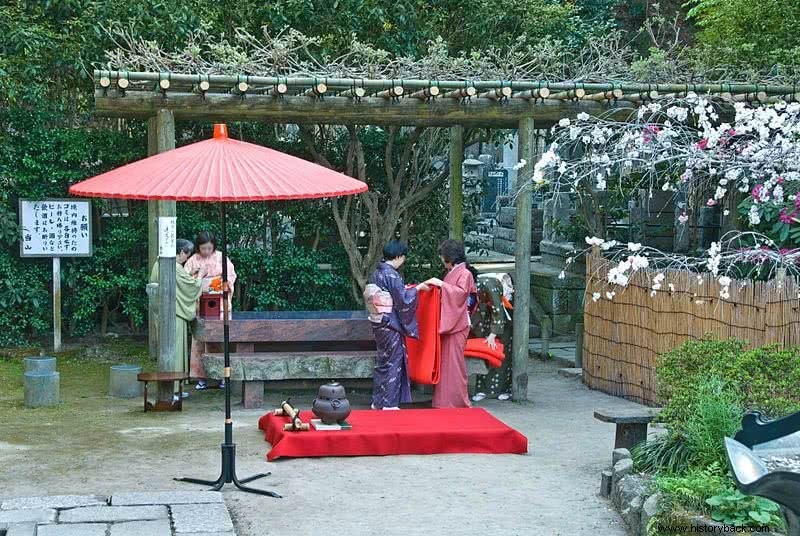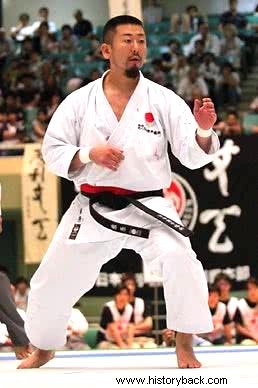Japan exhibits a multifaceted culture with ancient traditions. Although it has roots in Chinese culture, the geographical distance allowed Japan to build a differentiated cultural model whose marks persist despite the dynamic characteristic of the people of adapting to technological evolution.
Religion
The Japanese have religious syncretism as their brand. Their main beliefs are rooted in Shinto and Buddhism, but coexist with other religions, even Christianity.
Unlike what happens in the West, in Japan there is no religious preaching and religion is not seen as a doctrine, but a way of life. It is considered a moral code, a way of life and is so ingrained that it is indistinguishable from the social and cultural values of the population.
Introspection also marks religion in Japan. The prayers are not public, and even less are they part of official ceremonies. Worship is not common among the Japanese. The rituals of life (birth, weddings, anniversaries) and death (funerals) are a common part of life in Japan.
It wasn't always like that, however. Until World War II, the Japanese emperor was considered a true god. The conflict broke this belief system, and after the economic recovery, religion defines the spirituality of the people.
Read more about Shinto and Buddhism.
Japanese Gardens

Among the tourist attractions that demonstrate the essence of Japanese culture are the gardens, whose culture was imported from China around the year 600. The gardens exalt the Buddhist religion, although they have a functional character.
Tea Ceremony
More recently, this tradition would have started in 1192, when a Chinese Buddhist monk, Eisai, arrived in Japan. The ceremony imposes a ritual on the preparation of the powdered green tea infusion.
The ceremonies with the demonstration of Japanese culture would have started between 1333 and 1573, led by monks in the gardens designed only for the rituals.
Between 1568 and 1600, the ceremonies already had adornments such as lanterns, trampolines and arch bridges built in gardens considered icons of Japan.
Customs
The Japanese live by strict codes and many are of such subtlety that few foreigners could notice or understand.
Among the most common habits that lead to knowledge of Japanese culture is the imposition of a curve on the back.
With their backs arched, the Japanese say hello, say goodbye, show gratitude or regret. Bowing your back means having respect. The formal bow soon leads to the image of the Japanese people.
Another symbol that soon leads to the image of Japan is the shoes, which are removed at the entrance of houses, temples and even restaurants. By tradition, the Japanese take off their shoes to sleep, sit and eat. As meals are made on tatamis, removing shoes is a way to keep the environment hygienic.
Also discover the ancient art of origami by reading :Origami:definition, origin and meanings.
Sports
Sports are an important element in Japanese culture. The sports that quickly refer to the practice in Japan are sumo, judo, karate and aikido. Today, however, badminton, baseball and football are widely played in Japan.
Sumo
Sumo is considered a national sport, having been practiced for at least 1,500 years.
It is a professional sport, but it still has its ritualistic roots, such as the use of salt to purify and feed practitioners.
High-performance sumo athletes are revered by the Japanese. Today, the sport is also sought after by foreigners, but the most famous athletes are still the natives.

Kendo
Considered the oldest martial art in Japan, kendo consists of the use of bamboo swords joined by leather straps. It has been practiced since 1333, because the samurai needed to practice the use of the sword.
Karate
From Japan, karate arrived in China, where it was perfected. Its origins, however, are even directed to the Indian continent. Karate is spread to the world and presents a fantastic way of combat without the use of weapons.

Japanese cuisine
Food
Japanese food is so particularly diverse and alluring that it alone would be a justification for visiting the country. Like the sport, it spread around the world, carried by migrants and involving fans everywhere.
From Japan came sushi, a delicacy that mixes fish and rice wrapped in a seaweed cover. And of paramount importance in Japanese cuisine is rice which, of such significance, has already been traded as currency.
Rice is the basis of at least 2,000 Japanese dishes. The demand for quality begins at planting and harvesting follows special guidelines.
Another ingredient that sums up the peculiarity of Japanese cuisine is fish, prepared in such a diverse way that it is even enjoyed at breakfast, where it needs to be eaten raw.
Drink
Sake is the national Japanese drink. It is a white rice wine that can serve as an accompaniment to several meals. Another tradition in Japan is tea, consumed on a large scale.
The importance of tea has earned it a specific ceremony, which involves its preparation and consumption.
Read more
- Japan
- Japanese immigration
